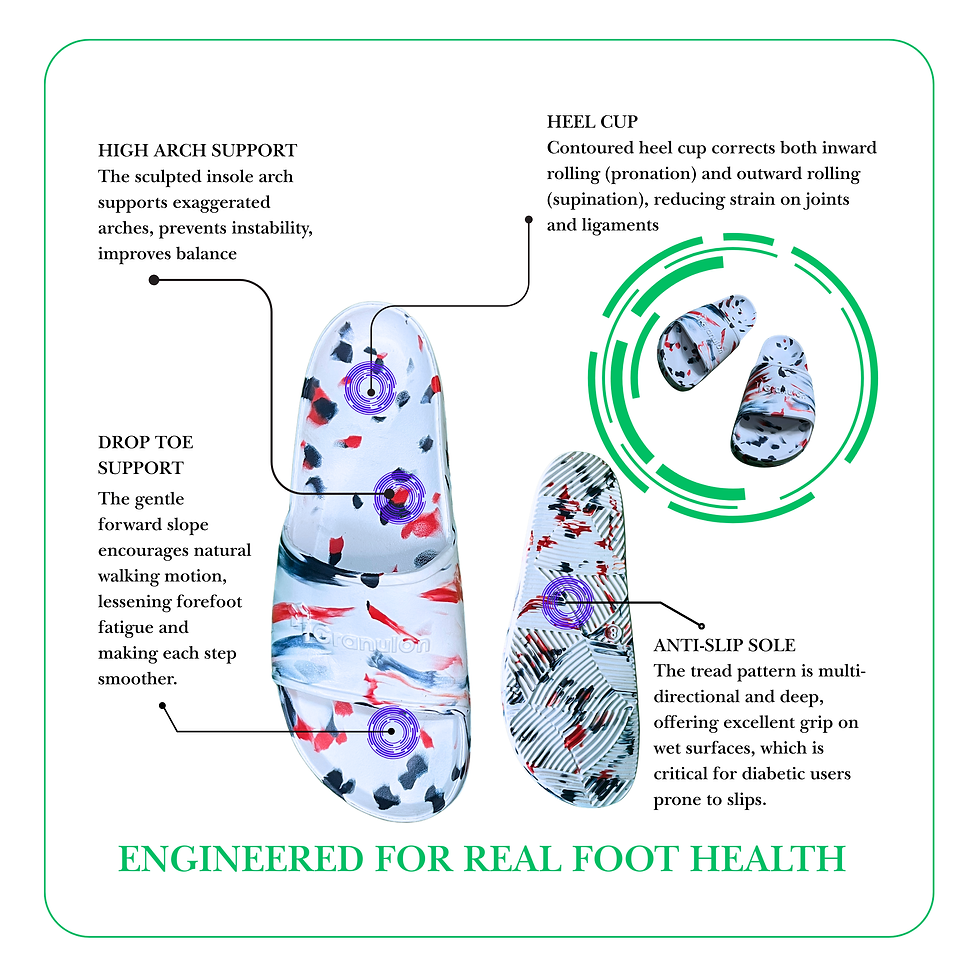Footwear Tips for Long-Distance Walkers and Runners
- Aria

- Jan 10
- 3 min read
Whether you're a seasoned marathoner or enjoy long-distance walks, the right footwear can make all the difference in your performance and comfort. Choosing the correct shoes helps prevent injuries, improves efficiency, and enhances your overall experience. Here are some essential tips for selecting the perfect footwear for long-distance walking and running.

1. Understand Your Foot Type
Before investing in a pair of shoes, it's crucial to understand your foot type. Feet generally fall into three categories: neutral, overpronated, and under pronated (supinated). You can determine your foot type by analyzing your arch and how your foot rolls when you walk or run. Specialized running stores often provide gait analysis services to help you choose shoes that cater to your specific needs.
2. Prioritize Comfort and Fit Footwear
Comfort should be your top priority when selecting footwear for long-distance activities. A properly fitting shoe should have enough room in the toe box to wiggle your toes but not so much that your foot slides around. Ensure there’s about a thumb's width of space between your longest toe and the shoe's front. The heel should fit snugly without slipping, and the shoe should feel secure without being too tight.
3. Choose the Right Cushioning
Cushioning is vital for absorbing impact and reducing stress on your joints during long-distance activities. Different shoes offer varying levels of cushioning, so consider your personal preference and the type of surface you’ll be walking or running on. For example, road runners may prefer shoes with more cushioning to absorb hard surface impacts, while trail runners might opt for shoes with moderate cushioning and extra stability.
4. Look for Breathable Materials
Breathable materials help keep your feet cool and dry, reducing the risk of blisters and discomfort. Look for shoes made with mesh or other breathable fabrics that allow air circulation. Moisture-wicking insoles can also help manage sweat and keep your feet dry during long-distance walks or runs.
5. Don’t Forget About Weight
Lighter shoes can help reduce fatigue during long-distance activities. However, it’s essential to balance weight with the necessary support and cushioning. Ultra-light shoes may be tempting, but ensure they provide adequate support to prevent injuries.
6. Break in Your Shoes
Never wear brand-new shoes for a long-distance walk or run without breaking them in first. Gradually increase your usage over several shorter sessions to allow your feet to adjust to the new footwear. This process helps prevent blisters and discomfort during your main event or longer outings.
7. Replace Your Shoes Regularly
Running and walking shoes have a limited lifespan, typically ranging from 300 to 500 miles, depending on the shoe's construction and usage. Worn-out shoes lose their cushioning and support, increasing the risk of injury. Keep track of your mileage and replace your shoes when they show signs of excessive wear.
8. Consider Orthotics if Necessary
If you have specific foot conditions or require additional support, custom orthotics can be a valuable addition to your footwear. These inserts are designed to provide extra cushioning, arch support, and alignment correction, enhancing your comfort and performance during long-distance activities.
Conclusion
Selecting the right footwear is crucial for long-distance walkers and runners. By understanding your foot type, prioritizing comfort, and choosing shoes with appropriate cushioning and support, you can enhance your performance and reduce the risk of injuries. Don’t forget to break in your shoes and replace them regularly to maintain optimal foot health and comfort. With the right pair of shoes, every mile will feel more comfortable and enjoyable.



Comments